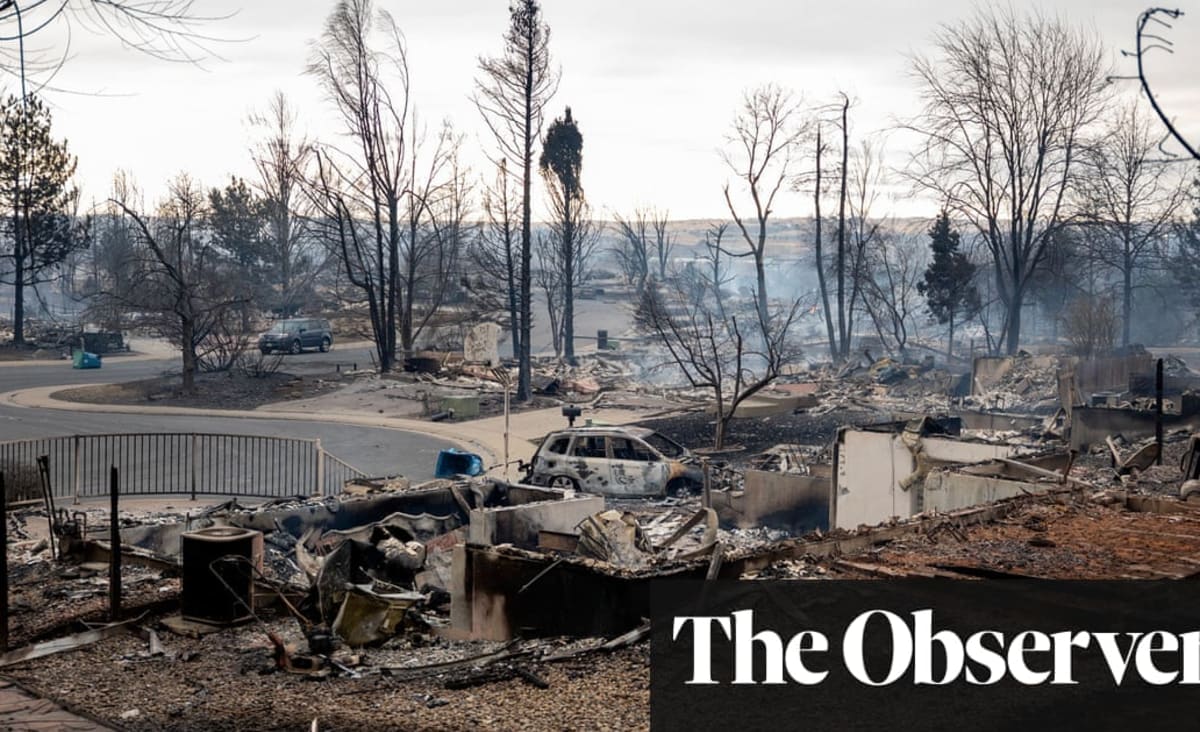
www.theguardian.com
Colorado wildfire: up to 1,000 buildings destroyed as Biden declares disaster
At least seven reported injured while cause of the blaze remains under investigation
Local
Up to 1,000 buildings may have been destroyed in the record wildfire that swept through a Colorado area abutting the Rocky Mountains, as Joe Biden declared the situation a disaster and experts warned that the climate crisis and suburban expansion contributed to the devastation.
After declaring that it was a miracle, based on the latest information, that no one was killed in the fire that roared with little notice through Boulder county on Thursday, officials said that more than 500 and as many as 1,000 homes and businesses may have been razed.
Aftermath of the Marshall Fire
A statue stands amidst the remains of homes destroyed by the Marshall Fire in Louisville, Colorado, U.S. December 31, 2021. REUTERS/Alyson McClaran TPX IMAGES OF THE DAY
‘We lost everything’: Colorado wildfire destroys hundreds of homes
Read more
Hundreds of residents who had expected to ring in 2022 in their homes were instead on Saturday starting off the new year trying to salvage what remained of them.
Families who had been forced to flee the flames with little warning returned to their neighborhoods Friday in the towns of Louisville and Superior, with a combined population of 34,000, north of the state capital Denver, to find a patchwork of devastation.
At least seven people were reported to be injured. The Boulder county sheriff, Joe Pelle, said that as authorities continued to work on the aftermath of the fire, that the likely toll on homes and businesses would increase as things became clearer.
“I would estimate it’s going to be at least 500 [and] I would not be surprised if it’s 1,000,” Pelle said on Friday.
He added that many structures were reduced to just “smoking holes in the ground”.
It’s been deemed the most destructive wildfire in Colorado’ history.
Many homeowners on Saturday were already talking about building back in the same place.
Cathy Glaab found that her home in Superior had been turned into a pile of charred and twisted debris, one of seven houses in a row that were destroyed. “So many memories,” she said through tears.
She and her husband intend to rebuild the house they’ve had there since 1998, she said, because they love the natural space behind and the view of the mountains.
Boulder county abuts the eastern foothills of the Rockies, an area known locally as the Front Range. To the west is Rocky Mountain national park.
Flames had swept east through grassland and over drought-stricken neighborhoods with alarming speed, propelled by gusts up to 105mph, as tens of thousands were ordered to flee. The cause of the blaze remains under investigation.
Light snow fell on Friday, helping to extinguish the fire that had burned up to 10 sq miles, but snowfall in the area this winter has been late and light.
With temperatures forecast to be well above freezing in the county on Monday and Tuesday, the risk of fire remains, even though huge wildfires are not usual in December in Colorado.
The US president on Friday declared a major disaster in the area, ordering federal aid be made available to those affected.
Superior and Louisville are filled with middle- and upper-middle-class subdivisions with shopping centers, parks and schools. The area is between Denver and Boulder, home to the University of Colorado.
Scientists say climate change is making weather more extreme and wildfires more frequent and destructive.
Ninety per cent of Boulder county is in severe or extreme drought, and it hasn’t seen substantial rainfall since mid-summer. Denver set a record for consecutive days without snow before it got a small storm on 10 December, its last snowfall before the wildfires broke out.
Becky Bolinger, assistant state climatologist at the climate center at Colorado State University, tweeted: “The ingredients for a devastating wildfire have been coming together since last spring. A very wet spring 2021 helped grow the grasses. A very dry summer and fall dried the grasses out and prepared the kindling.
























































